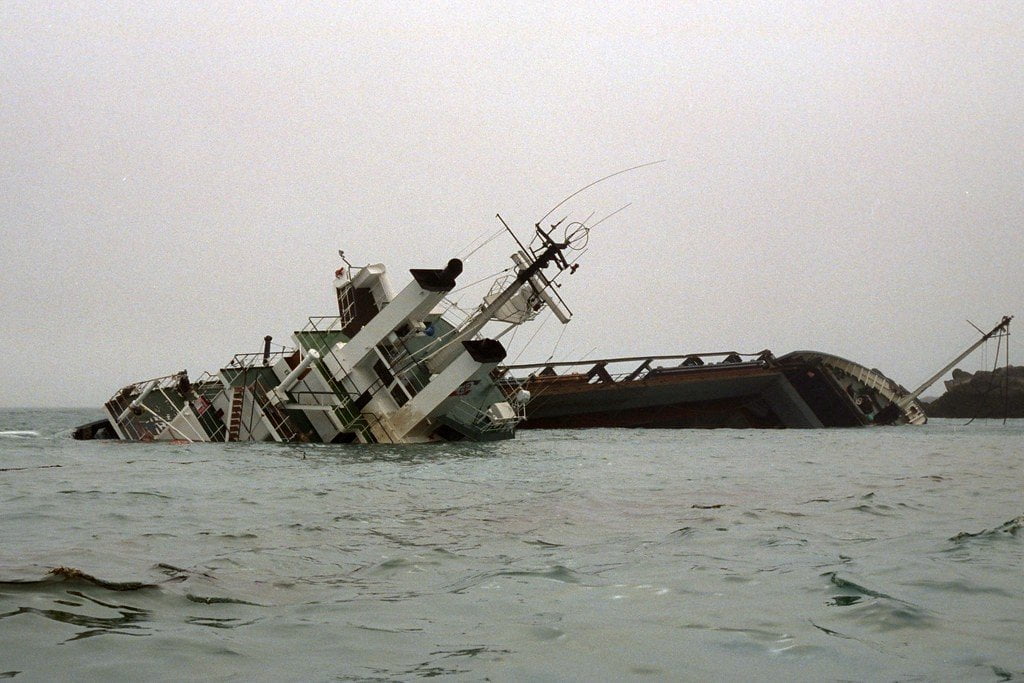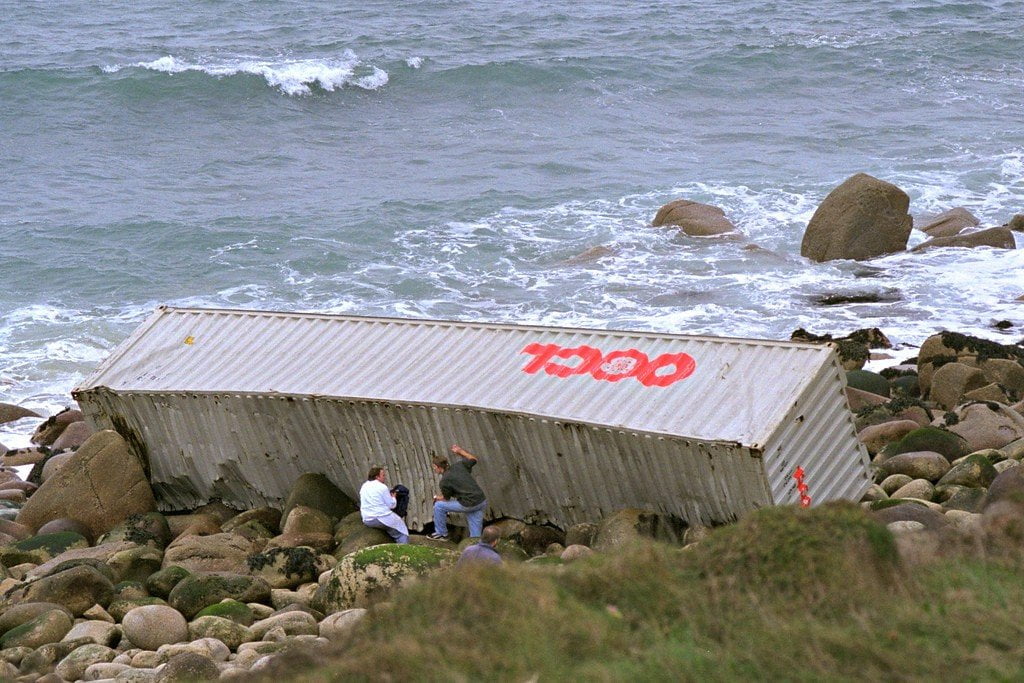We pray thee, Lord not that wrecks should happen, but if’ they do, thou wilt guide them to the Isles of Scilly for the benefit qf the poor inhabitants… …was supposedly composed by the Reverend John Troutbeck in the late 18th century. Jessie Mothersole at the beginning of this century quoted a young girl’s prayer: “God bless father, God bless mother and send us a wreck in the morning.” “Wrecking” on Scilly has never been the luring of vessels on to the rocks by means of false lights, whether hung on horns of cattle or deliberately allowing lights on lighthouses to be put out or obscured.
It is the thankful acceptance of whatever goods can be salvaged from, or washed ashore from wrecks. The tradition of wrecking goes back at least 800 years, when the charter of Tavistock Abbey, the owners of Tresco Priory, stated that all wrecks on the islands were to be “enjoyed” by their monks. It is likely that the number of wrecks which have come to grief on the shores of Scilly reach some 1500. Stories of the older ones have passed into folklore. One which comes to mind is the barque Palinurus, wrecked off St. Martin’s on 27th December, 1848. She was bound from Demerara to London ;- with a cargo of rum and sugar. It is said that the entire male population of the island, many of them tee-total Methodists, were drunk from their efforts at salvage.

One young man excused himself to his mother with the words: “It was the fumes, Ma!” In this century until the 26th March this year, it was always said that the Minnehaha, 13,000 tons, wrecked on Scilly Rock on 18th April, 1910, was the best ever wreck on Scilly. Having struck Scilly Rock, just to the west of Bryher, she continued to float and most of her cargo was jettisoned to enable her to be pulled free. Cattle were pushed overboard and the shores of the island were littered with harmoniums, pencils, Panama hats, barrels of oil, leaf tobacco and cases of “Old Judge” cigarettes. It is said that every house on the islands acquired a Singer sewing machine and every boy was sick as a result of sampling the “Old Judge” cigarettes. On the 26th March, this year, the 3000 ton motor vessel Cita struck Newfoundland Ledge, just off Porth Hellick Bay on the eastern side of St. Mary’s.
The vessel, owned by a German company, registered in Antigua and crewed by Poles was bound from Southampton to Belfast. Her cargo was some two hundred containers full of various desirable consumer products. She was a least sixteen miles off the approved course for vessels making their way between Land’s End and the islands. The crew was quickly lifted off by a Culdrose helicopter with St. Mary’s lifeboat standing by. As she heeled over to her port side some of the containers and stacks of plywood, tied to her deck, fell into the sea and drifted ashore.
News travels fast on St. Mary’s and before long the beaches and cliff tops were lined with expectant locals. The first containers were not very exciting – plastic bags for an Irish supermarket and more plywood, but as the day went on, rumour spread of containers loaded with leaf tobacco and Amstrad mice (or mouses) for computers. These were followed by car tyres from the Pirelli range, a thousand or so brand new doors in all shapes, sizes and materials. Then news came of a cargo of Action Men dolls, washed up on St. Agnes, and a container of trainers at Watermill Bay. As day followed day, new parquet flooring appeared off Peninnis and a container of baby clothes, bound for Marks and Spencer’s, was trapped in the Pilchard Pool at Porthcressa.

One local man was heard to say: “I have waited forty-five years for a wreck like this.” The national press and television crews appeared, as if by magic. Comparisons were drawn with the wreck of the Politician in Whiskey Galore and the islanders accused of “stripping and looting”. The local police force was supplemented by a small detachment of constables from the mainland, brought in on a special night sailing of the Scillonian III to help in taking the names of, and car registration numbers, of those helping themselves.
Special early season fares on the Scillonian III encouraged visitors from West Cornwall to make day trips to the islands. One was seen returning with a haul of two hundred computer mouses and another returned home with two new tyres tucked under his arms. The Council of the Isles of Scilly t’ used its labour force – and the fire brigade to clean and clear -the beaches. Pollution from the 145 tons of oil on board was feared and a Dutch barge, the Salvage Chief and the Forth Explorer together with two tugs were brought to the islands to extricate the oil. There was a danger to shipping from the many containers floating in the sea and damage to the fishing grounds. when they sank.
As many as possible were towed into St. Mary’s to await transport to the mainland; others floating in the sea in the direction of the main tidal stream were towed into Newlyn. The islanders were being given a very bad image as -wreckers and looters” by the national press. Very few newspapers reported the other side of the picture. The container washed into Porthcressa was found to have clothing, the vast majority of which appeared to be babygrows, pyjamas and buster suits for children under the age of three.
The islands have only some fifty children of that age group. Supported by the local clergymen and Jane Chiverton, a representative of the British Red Cross Society, locals, mainly women, waded waist deep and sometimes more into the pool, gathered piles of soggy clothing and took it home to wash, dry and sort. Jane’s husband took his dumper truck to the beach to bring up the clothes and the vast amount of plastic packing. (Everything was impregnated with sea water; the cardboard stiffening was disintegrating and shrimps and small crabs were beginning to move to the shelter of the plastic wrapping.) The little backyards in Hugh Town were festooned with drying baby clothes and the estate at Old Town was described as “looking like a Chinese laundry”. Dozens of bags of clothes were dispatched to the White Cross Mission for Rumania and to mother and baby homes.
The islands were extremely fortunate that there was no major oil pollution and no casualties. The wreck of the Cita will join the mythology of the islands, but for me it will be the memories of the local crab lady advertising “Free plastic bag with every pound of crab!” and a small boy returning from Porth Hellick, clutching the cable of a computer mouse and making squeaking noises. Footnote: It has been revealed that one of the containers on the sea-bed off St.Mary’s contains granite headstones and tombstones from India, bound for Belfast. These could change the appearance of Old Town churchyard over the next few years.